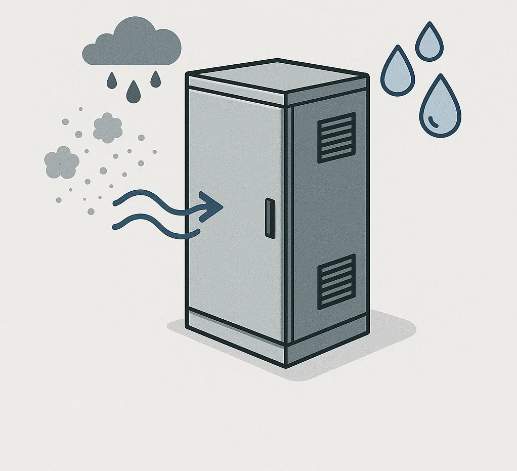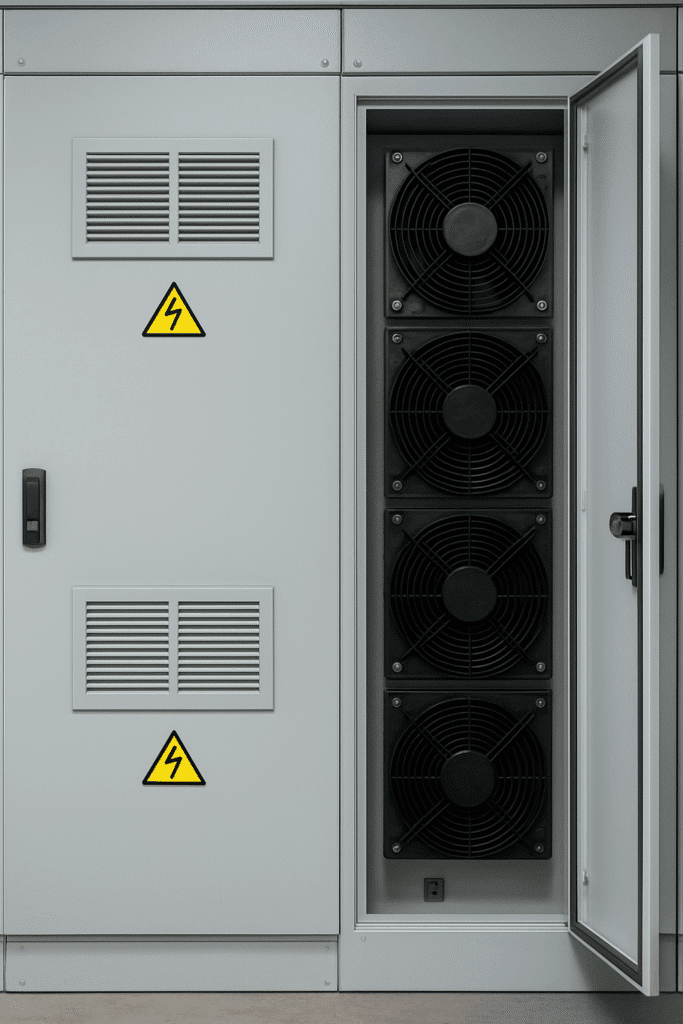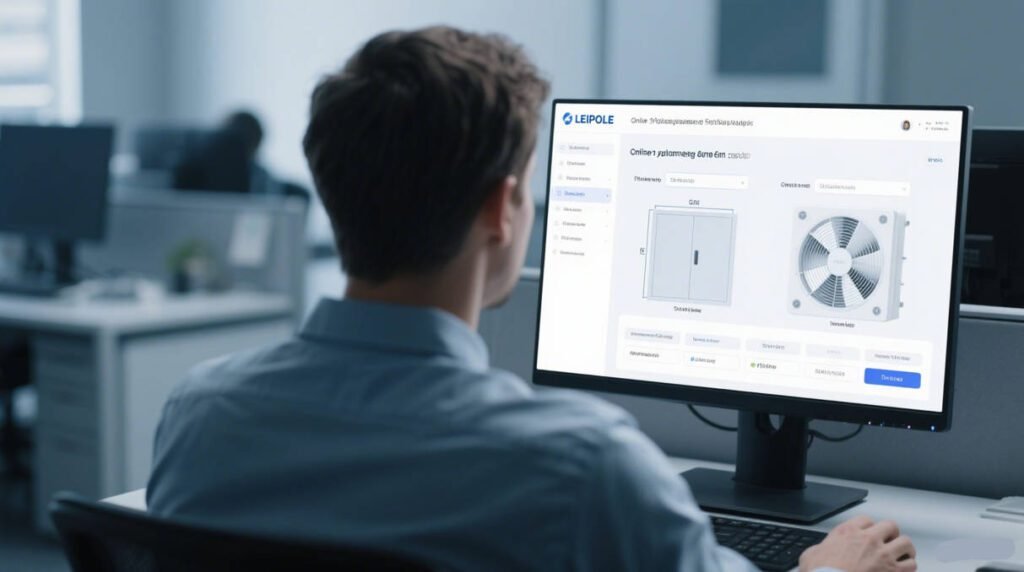Your control panel just shut down the line again, didn’t it? Heat inside that metal box might be the silent culprit costing you thousands in downtime. Let’s explore why Enclosure cooling is essential.
Enclosure cooling is vital because it protects sensitive electronics like PLCs and VFDs from overheating. This prevents malfunctions, extends component life, ensures reliable operation, avoids costly downtime, and maintains safety within your industrial control panels.
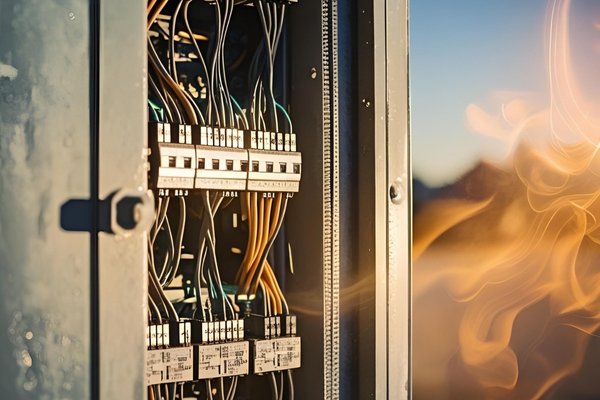
You might think keeping the doors closed protects everything inside, but often, it just traps the real enemy: heat. Ignoring the temperature inside your industrial control panels is like ignoring the oil light in your car – eventually, something expensive will break down. I’ve seen it happen too many times. Understanding why managing this heat is so important is the first step to keeping your operations running smoothly. Let’s dive deeper into where this heat comes from and what it really does to your critical equipment.
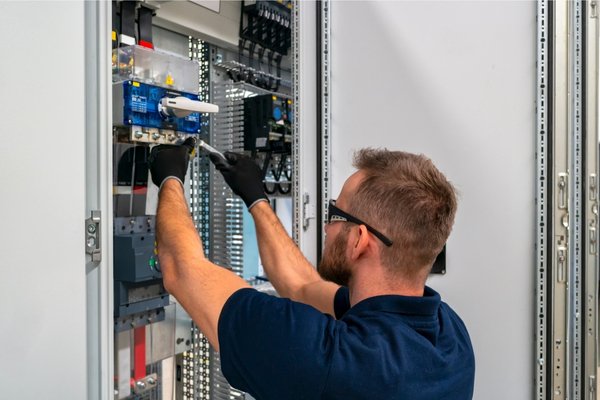
Dive Deeper: Where Does the Heat Inside an Industrial Control Panel Primarily Come From?
It’s easy to overlook, but the inside of an industrial control panel can get surprisingly hot. This heat doesn’t just appear out of nowhere; it’s generated by the very components doing the work and influenced by the surrounding environment. Understanding these sources is key to effective thermal management .
Source 1: The Components Themselves
Most electronic components generate heat as a byproduct of their normal operation. Think about it:
- Variable Frequency Drives (VFDs): These are major heat generators, especially under heavy load. They convert power, and this process isn’t 100% efficient; the losses often turn into heat.
- Power Supplies: Converting AC to DC power for the panel’s components generates significant heat. The higher the load, the more heat they typically produce.
- Programmable Logic Controllers (PLCs): While often less power-hungry than VFDs, the CPU and I/O modules still contribute to the overall heat load.
- Transformers and Reactors: These magnetic components generate heat due to core losses and winding resistance.
- Relays, Contactors, and Circuit Breakers: Even these devices generate some heat when current flows through them or when coils are energized.
- Human-Machine Interfaces (HMIs): Screens and their processors add to the thermal load.
Source 2: Environmental Factors
The environment outside the enclosure plays a big role too:
- Ambient Temperature: If the panel is in a hot factory, near a furnace, or even outdoors in direct sunlight, that external heat will transfer into the enclosure.
- Radiant Heat: Nearby hot processes or equipment can radiate heat onto the enclosure surfaces, warming the interior.
- Poor Ventilation: If the area around the panel has poor airflow, heat dissipated from the enclosure surface won’t be carried away effectively.
Source 3: Enclosure Design and Installation
Sometimes, the way the panel is designed or installed contributes to heat buildup:
- Component Density: Packing too many heat-producing components tightly together limits natural air circulation inside the panel.
- Enclosure Size and Material: A smaller enclosure has less surface area to dissipate heat. The material and even the color can affect heat absorption and radiation.
- Sealing (IP Rating): While necessary for protection against dust and moisture, a tightly sealed enclosure (high IP rating) also traps heat effectively, making cooling systems crucial.
Understanding these sources helps us realize that nearly every active panel generates heat that needs managing.
Dive Deeper: What Happens When Components Inside a Control Panel Overheat?
So, we know heat builds up. But what actually happens when those sensitive components get too hot? It’s not pretty, and the consequences range from annoying glitches to complete system failure. I’ve seen firsthand how heat wreaks havoc inside a panel.
Immediate Malfunctions and Failures
This is often the most visible impact.
- Nuisance Tripping: Protective devices like VFDs, servo drives, or even circuit breakers have built-in thermal protection. When temperatures exceed their limits, they trip to protect themselves. This causes sudden, unexpected stops in your process. You might reset it, only for it to trip again if the root cause (heat) isn’t addressed.
- Component Shutdown: Processors in PLCs or HMIs might automatically slow down (thermal throttling) or shut off completely to prevent permanent damage. This leads to loss of control or visibility.
- Data Errors: High temperatures can increase the likelihood of errors in data processing or communication between devices, leading to incorrect operations or alarms. Think garbled HMI screens or PLCs making wrong decisions.
Reduced Lifespan and Premature Aging
Even if components don’t fail immediately, heat significantly shortens their operational life.
- Capacitor Degradation: Electrolytic capacitors, common in power supplies and VFDs, are very sensitive to heat. High temperatures cause the electrolyte to dry out faster, reducing capacitance and eventually leading to failure. A general rule is that for every 10°C increase above the rated temperature, the capacitor’s life is halved.
- Insulation Breakdown: Wiring and component insulation materials degrade faster at elevated temperatures, increasing the risk of shorts or performance issues.
- Semiconductor Wear: The silicon components in processors, VFDs, and power modules experience accelerated aging when operated consistently above their ideal temperature range.
Performance Degradation and Inaccuracy
Components might still work when hot, but not as well as they should.
- Processor Slowdown: As mentioned, CPUs might throttle their speed to manage heat, impacting processing power and responsiveness.
- Sensor Drift: Analog components and sensors can become less accurate at higher temperatures, potentially affecting process measurements and control quality.
- Power Supply Instability: Overheated power supplies might struggle to deliver stable voltage, causing erratic behavior in the components they power.
Essentially, overheating creates an unstable and unreliable environment for the very components designed for precision and control. It turns predictable automation into a frustrating game of chance.
Dive Deeper: Are Overheating Control Panels a Safety Hazard?
We often focus on downtime and component costs, but we absolutely cannot ignore the safety implications of overheating control panels. While perhaps less frequent than performance issues, the safety risks are real and potentially severe. Protecting personnel and property must always be the top priority.
Electrical Risks
Heat is the enemy of electrical insulation and connections.
- Insulation Failure: As mentioned before, prolonged exposure to high temperatures degrades the insulation on wires and within components. Brittle or cracked insulation can lead to exposed conductors. This dramatically increases the risk of short circuits between wires or from a wire to the enclosure chassis.
- Short Circuits: A short circuit can cause high fault currents, potentially leading to arcing, component explosions, or damage to upstream protective devices. If an energized conductor touches the enclosure due to failed insulation, the entire panel could become dangerously energized if not properly grounded.
- Connection Loosening: Thermal cycling (heating up during operation, cooling down when off) can cause terminal screws and connections to loosen over time. A loose connection creates high resistance, which in turn generates even more heat at that point—a dangerous feedback loop that can melt terminals or cause intermittent circuits.
Fire Hazards
In extreme cases, overheating can escalate to a fire.
- Component Ignition: Severely overheated components, especially power components like transformers, reactors, or even tightly packed wiring, can potentially reach temperatures high enough to ignite nearby flammable materials (like wire insulation or plastic component housings). While modern materials often have flame-retardant properties , the risk isn’t zero, especially with aging or damaged components.
- Arc Flashes: A short circuit caused by heat-damaged insulation can sometimes initiate an arc flash—a dangerous explosion of energy that poses extreme risks to anyone near the panel.
Personnel Safety
Beyond the direct electrical and fire risks:
- Unexpected Equipment Behavior: If overheating causes control system malfunctions (e.g., PLC errors, sensor inaccuracies), the machinery controlled by the panel could behave erratically or unexpectedly, posing a risk to operators or maintenance staff working nearby.
- Contact Burns: While less common with properly enclosed panels, internal components or even the enclosure surface itself could become hot enough to cause burns if touched during maintenance or inspection, especially if cooling systems have failed.
Proper thermal management isn’t just about efficiency; it’s a fundamental part of ensuring a safe operating environment around industrial machinery.
Dive Deeper: What are the Key Benefits of Implementing Proper Enclosure Cooling?
Okay, we’ve established that heat is bad news for control panels. Now, let’s flip the script and look at the positive side: what are the tangible benefits you gain by actively managing the temperature inside your enclosures? From my experience, investing in proper cooling pays for itself many times over. It’s not just an expense; it’s a strategic investment in your operation’s health .
Benefit 1: Enhanced System Reliability and Reduced Downtime
This is the big one for most operations.
- Fewer Failures: By keeping components within their safe operating temperature range, you drastically reduce the likelihood of heat-induced malfunctions and sudden shutdowns. No more nuisance trips stopping the line at the worst possible moment.
- Predictable Operation: Cooling ensures components perform as expected, leading to more stable and predictable processes. You can trust your automation to do its job consistently.
- Lower Repair Costs: Preventing failures means spending less on emergency repairs, replacement components, and the labor required to fix issues.
Benefit 2: Extended Equipment Lifespan
Cooling protects your investment in the expensive components within the panel.
- Slower Degradation: As we discussed, heat accelerates the aging of electronics. Effective cooling slows this process down significantly. Capacitors last longer, insulation stays intact, and semiconductors remain robust.
- Maximized ROI: Control panels and their components represent a significant capital investment. Extending their useful life through proper thermal management means you get more value from that investment before needing costly replacements or upgrades.
Benefit 3: Maintained Performance and Accuracy
Your processes rely on the panel’s components performing correctly.
- Optimal Speeds: Processors run at their intended speeds without thermal throttling.
- Accurate Readings: Sensors and analog devices provide more reliable data when not affected by temperature drift.
- Consistent Control: VFDs, PLCs, and other controllers operate within their designed parameters, ensuring precise control over your machinery and processes. This can directly impact product quality and consistency.
Benefit 4: Improved Safety
As we just covered, controlling heat directly contributes to a safer work environment.
- Reduced Fire Risk: Minimizing overheating lowers the chance of component ignition or electrical fires.
- Lower Electrical Hazard Risk: Protecting insulation integrity reduces the likelihood of short circuits and potential electrocution hazards.
Benefit 5: Compliance with Standards
Many industry standards and specifications require consideration of thermal management.
- Meeting Requirements: Proper cooling helps ensure your panels meet standards like UL 508A or specific customer requirements related to operating temperature and component derating. This can be crucial for certifications and project acceptance.
Investing in the right cooling solution transforms the control panel from a potential weak link into a reliable hub for your operations.
Dive Deeper: How Do You Choose the Right Cooling Solution for Your Industrial Control Panel?
Knowing you need cooling is one thing; choosing the right method is another. There’s no single “best” solution – it depends entirely on your specific situation. Making the wrong choice can be ineffective or unnecessarily costly. Over the years, I’ve helped countless clients navigate this decision. Here’s a breakdown of the thought process I typically follow:
Step 1: Calculate the Heat Load
First, you need to know how much heat you need to remove.
- Internal Heat: Add up the heat dissipation (usually listed in datasheets in Watts) of all components inside the panel (VFDs, power supplies, PLCs, etc.). This is your primary heat load.
- External Heat Transfer: Consider heat entering the enclosure from the outside. This depends on the ambient temperature, enclosure size, material, color, and exposure to sunlight or other heat sources. There are formulas and online calculators to estimate this.
- Total Heat Load: Sum the internal heat generation and the external heat transfer. This gives you the total amount of heat (in Watts or BTU/hr) that your cooling system needs to handle.
Step 2: Analyze the Operating Environment
Where will the panel live?
- Ambient Temperature: What’s the maximum expected temperature outside the enclosure? This is critical.
- Air Quality: Is the surrounding air clean, or is it dusty, oily, corrosive, or contain conductive particles? This heavily influences whether you can use ambient air for cooling.
- Humidity: Is condensation a risk? High humidity might require specific cooling approaches or NEMA ratings (like NEMA 4X).
- Space Constraints: How much physical space is available on or around the enclosure to mount cooling equipment?
Step 3: Evaluate Cooling Options
Based on the heat load and environment, you can consider different technologies:
- Filter Fans: These are cost-effective for lower heat loads and relatively clean environments. They work by drawing cooler ambient air into the enclosure and exhausting hotter air. They require the ambient air to be cooler than the desired internal temperature and clean enough not to contaminate components. Products like our FKL99 series offer efficient airflow for this purpose .
- Air-to-Air Heat Exchangers: These create a closed loop inside the enclosure and a separate loop for ambient air. Heat is transferred between the loops without mixing the air. Good for moderately dirty environments where internal air needs to stay clean, but still relies on ambient air being cooler than the target internal temperature.
- Enclosure Air Conditioners: These use refrigerant to actively cool the internal air, much like a room AC. They create a closed loop and can cool the enclosure below the ambient temperature. Ideal for high heat loads or hot environments. They also help dehumidify the air. Modern units like our LP series offer efficiency and control options .
- Vortex Coolers: Use compressed air to create very cold air for spot cooling, but are generally less energy efficient for cooling entire enclosures.
- Liquid Cooling (Air-to-Water Heat Exchangers/Chillers): For very high heat loads, liquid cooling can be extremely effective. Water or a coolant mixture circulates through a heat exchanger inside the panel, carrying heat away to be dissipated elsewhere, often via an external chiller.
| Cooling Method | Pros | Cons | Best For |
| Filter Fans | Low cost, simple installation | Needs clean, cool ambient air; requires filter changes | Low heat loads, clean environments, ambient temp < target internal temp |
| Heat Exchanger | Closed loop (keeps internal air clean) | Relies on cool ambient air; larger size | Moderate heat loads, dusty environments, ambient temp < target internal temp |
| Air Conditioner | Cools below ambient, dehumidifies, closed loop | Higher cost, requires power, maintenance | High heat loads, hot/humid environments, dirty environments |
| Liquid Cooling | Very high cooling capacity | Complex, higher initial cost, requires chiller | Extremely high heat loads, specialized applications |
Step 4: Factor in Maintenance and Total Cost
Consider the long term.
- Initial Cost vs. Operating Cost: Fans are cheap initially but might use more energy overall than a right-sized AC in some scenarios. ACs cost more upfront but might be necessary.
- Maintenance: Filter fans need regular filter changes. ACs require periodic checks of coils, drains, and refrigerant levels. Heat exchangers are generally lower maintenance.
- Reliability: Choose reputable manufacturers and appropriately sized units for dependable operation.
Conclusion
Choosing the right cooling solution is about balancing performance needs, environmental conditions, budget, and maintenance considerations to ensure optimal protection for your critical components.


